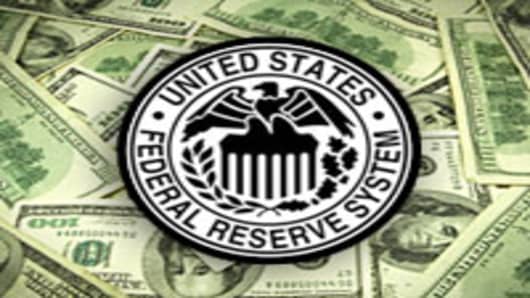McDermott quoted a speech that Fed Vice Chair Janet Yellen delivered on Saturday to address the precise mechanics of what the Federal Reserve may do in the event of rising inflation.
Yellen said: "In that event [the inability of the Fed to remove excess liquidity through changes in interest rate targets], the Federal Reserve can use tools it has developed and tested to drain or immobilize bank reserves, thereby enhancing our control over the federal funds rate."
What may be most intriguing from that statement is the word 'tested'.
As Yellen explained: "The Federal Reserve has also put in place a Term Deposit Facility through which it can offer deposits to member institutions that are roughly analogous to the certificates of deposit that these institutions offer to their customers. We have tested both of these tools by conducting several small-scale operations and have the ability to initiate them quickly if needed."
Perhaps the phrase that may be of most concern in that quotation is 'small-scale': Whether that facility for draining liquidity will function on a larger scale remains to be seen.
Indeed, in the very next sentence Yellen explains "The use of reverse repurchase operations and the Term Deposit Facility would allow the Federal Reserve to drain hundreds of billions of dollars of reserves from the banking system should conditions necessitate."
The disconnect between 'small-scale' on the one hand—and 'drain hundreds of billions of dollars of reserves' on the other—apparently leaves Yellen unfazed.
She ends the paragraph with "We don't think that draining such large amounts of reserves will be necessary for a smooth exit, but it makes sense to be prepared, and hence we have followed this 'belt and suspenders' approach."
Yellen concludes her description of the policy toolbox options for exiting the expanded balance sheet position with a simple description of a reverse operation: "Finally, we can sell portions of our holdings of MBS, agency debt, and Treasury securities if we determine that doing so is an appropriate way of tightening financial conditions when the time comes. The redemption or sale of securities would have the effect of reducing the size of the Federal Reserve's balance sheet as well as further reducing the quantity of reserves in the banking system. Restoring the size and composition of the balance sheet to a more normal configuration is a longer-term objective of our policies. Any such sales would be at a gradual pace, would be clearly communicated to market participants, and would entail appropriate consideration of economic conditions."
Her ultimate conclusion: "In short, the range of tools we have developed will permit us to raise short-term interest rates and drain large volumes of reserves when it becomes necessary to achieve the policy stance that fosters our macroeconomic objectives--including the objective of maintaining price stability. "
To what degree that will reassure the deficit hawks—and those who are most skittish about the prospects of intermediate and long-term inflation—it is difficult to say.
It should provide some degree of assurance that the Federal Reserve is, in fact, thinking through—and even testing—its exit strategy for monetary easing.
Even if those tests are only on a very 'small-scale'.
________________________________________________
Questions? Comments? Email us atNetNet@cnbc.com
Follow NetNet on Twitter @ twitter.com/CNBCnetnet
Facebook us @ www.facebook.com/NetNetCNBC


